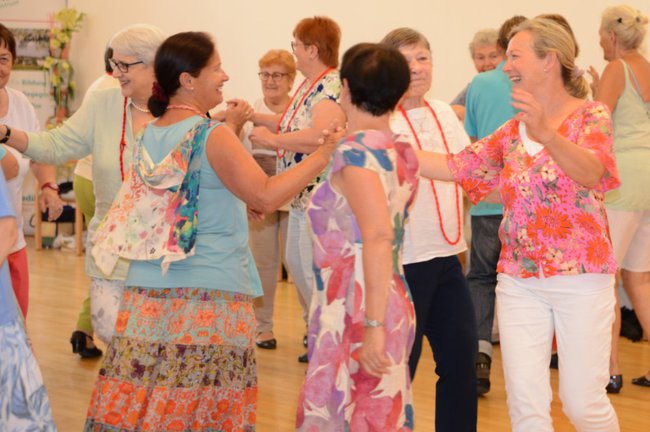Study: Dancing Improves Seniors’ Sense of Balance
St. Pölten UAS Carries out Study to Examine Health Effects Dancing Has on Senior Citizens

Dancing helps seniors to improve their sense of balance and promotes social interaction. This is the result of a study conducted by the St. Pölten University of Applied Sciences on behalf of the Lower Austrian initiative “Tanzen ab der Lebensmitte” (dancing in life’s second half).
The objective of the study was to find out how the physical and social exercise and abilities of persons who engage in regular sporting activities or dancing differ from those of people who move only in terms of their everyday lives.
Factors measured were sense of balance while standing and walking, muscular endurance of the legs, and – based on questionnaires – social participation, fear of falling, and physical activity.
Dancing Promotes Sense of Balance in Seniors
It turned out that people who dance on a regular basis had an even better sense of balance than those who engage in other regular sporting activities. Moreover, seniors who are part of dance or sports groups are more socially active than those who “only” perform their everyday exercises – and even more socially active than those who engage in sporting activities on their own. The senior citizens who participated in the study were asked to evaluate their social interaction by providing information on the intensity of their contacts with family, friends, and neighbours.
The most physically active persons were those who practise sports on a regular basis. In a questionnaire, the subjects were asked to estimate how much time they spent walking on an average day in the past week and/or for how long they engaged in strenuous physical activities. When it comes to the fear of falling, the questionnaire showed no difference between the three active groups.
Muscular endurance was measured based on unilateral abduction of the hip, stretching of the knees, and standing on one’s toes. Seniors moving only as part of their everyday lives had lower muscular endurance than those who danced or exercised regularly.
An Important Element for Movement Competence and Independence
“Various international studies have shown that dancing has positive effects for the body, mind, and soul. We are happy that our study has now contributed to this knowledge base here in Austria as well”, says Karl Hömstreit from the Landesverband Seniorentanz Niederösterreich (Lower Austrian regional association of dancing for senior citizens).
According to Hömstreit, dancing on a weekly basis helps to retain and expand the movement competences of older people, which helps to prevent falling and the resulting injuries. In addition, diseases that arise from a lack of exercise can be avoided and symptoms improved. “Dancing on a weekly basis promotes and strengthens social contacts which in turn protect against social isolation, loneliness, and depression, encourage an appetite for independence, and increase self-awareness”, emphasises Hömstreit.
“In the year 2040, more than a fourth of the Austrian population will be 65 and older. Ageing processes include a loss of balance, muscular endurance, and the ability to walk as well as cognitive deficits and isolation. Age-related depression and falling as well as their implications are a strain on our healthcare system. Training, physical and social activity – including dancing – help to counterbalance deficits associated with old age”, says Anita Kidritsch, lecturer at the St. Pölten UAS’ Department of Health Sciences.
The study featured 50 healthy seniors between 60 and 80 years of age from Lower Austria and Vienna. 16 of them are dancers, 21 engage in regular sporting activities, and 13 are active in their everyday lives.
- Dance group for senior citizens (in German).
